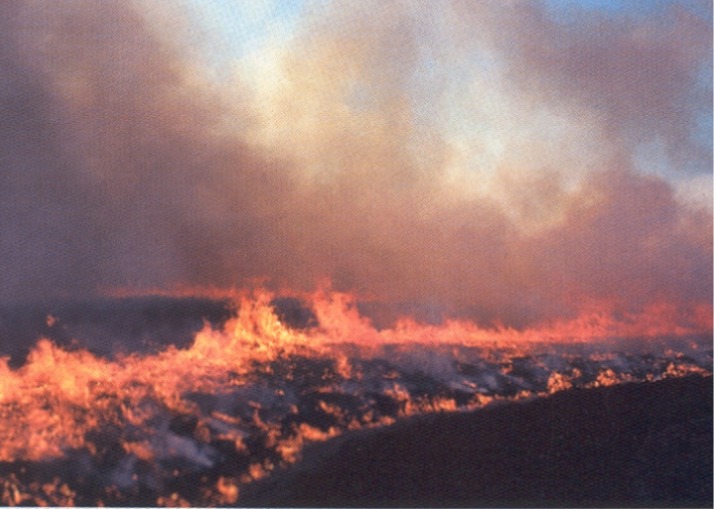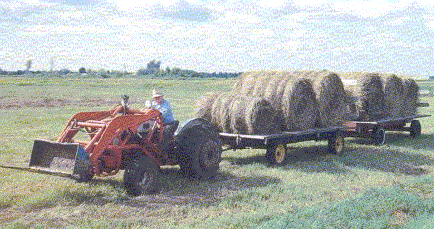Wisconsin's Prairie Chickens
Management
Fire
 B
Burning has been a common
tool used for land renewal in Wisconsin since the time of the earliest
inhabitants. Controlled fires remove dormant vegetation and litter, exposing
the soil to the sun and promoting new growth. Prescribed fires are conducted
throughout the managed grasslands on a five-year rotation.
Farming
 P
Planting and harvesting can
be compatible land use on range that supports prairie chickens. Farming
activity in the late 19th century and early 20th century provided a source of
food and shelter. Set-aside land soon produced a diversity of weeds and grasses
that were excellent brooding areas for hens with young chicks. Older, more
established growth that followed provided nesting cover.
To create this cycle of soil and vegetation manipulation, small areas
on managed land are planted in a crop rotation of corn, oats, and hay. Where
there is a corn crop, a portion is left standing for winter food. After two
years of planting corn, each area is seeded to grass and cut for hay for two
more years. This is followed by several years of undisturbed grass. Then the
farming cycle begins again.
Grazing
 G
Grazing is a valuable grassland management tool and has been an
important part of the prairie chicken management program since the mid 1980's. Carefully regulated grazing
can control unwanted woody vegetation and stimulate desirable grassland
plants.
In spite of intensive management, the Buena
Vista Grassland remains a wild landscape rather than an artificial museum
dedicated to the last of a species. A wide variety of wildlife inhabits these
scattered grasslands, including hawks and owls that may prey on chickens. This
is purposefully a natural landscape, alive with many grassland songbirds,
sandhill cranes, upland sandpipers as well as badgers, red fox, coyotes and
other mammals. It is grassland habitat that blends smoothly into the horizon of
crop and pastureland that distinguishes this part of the state.

